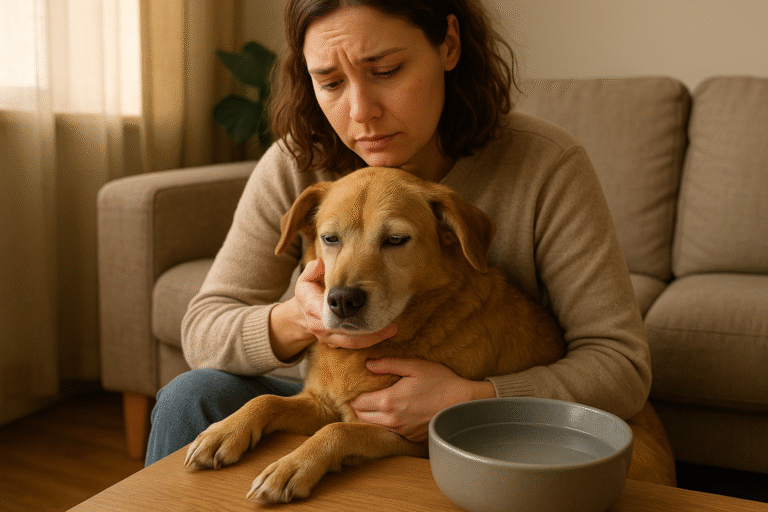Understanding dog behavior can improve your relationship with your pet. Learn how pet behavior, canine behavior, and dog psychology influence your furry friend’s actions.
Table of Contents
ToggleUnderstanding Dog Behavior: Why Your Pet Acts the Way They Do
Dogs have been close companions to humans for centuries. Yet, their actions often confuse even the most devoted pet owners. Misunderstood barking, random digging, or sudden anxiety may leave many wondering why their pets behave the way they do. The field of dog behavior opens a window into the canine mind, offering clarity, understanding, and a stronger bond between you and your pet.
The Basics of Dog Psychology
To comprehend dog behavior, one must begin with dog psychology. Dogs process emotions and stimuli differently than humans. Unlike people, dogs rely more on instinct and body language. Their past experiences, genetics, and social environment shape their behavior today.
It is often believed that dogs act out due to disobedience, but most pet behavior is simply a form of communication. Fear, excitement, anxiety, and joy manifest through physical actions and vocalizations. Understanding the fundamentals of canine behavior helps to decode these actions and respond appropriately.
Communication through Body Language
Most dogs communicate non-verbally. Tail wags, ear positions, and body posture convey emotions more clearly than barks or growls.
- A relaxed tail and soft eyes usually indicate comfort.
- Stiff posture or raised hackles may suggest fear or aggression.
- Submissive dogs often crouch or expose their belly.
By paying close attention to these signs, pet owners can detect how their dog feels in various situations. When dogs feel misunderstood, behavioral issues may develop. Therefore, body language should never be ignored when analyzing dog behavior.

Unlock Your Dog’s Hidden Intelligence
Discover a proven dog training system that helps eliminate bad behavior and boosts your dog’s intelligence. Created by a certified dog trainer, it's fun, easy, and effective!

Train Your Pet the Smart Way
Kingdom of Pets offers expert training guides for dogs, cats, and other pets. Say goodbye to bad behavior with proven, humane techniques trusted by thousands of pet owners worldwide.
The Influence of Pack Mentality
Dogs are descendants of wolves and inherit a strong pack instinct. Although domestic dogs no longer live in packs, the mentality persists.
In a household, the dog often sees the human family as their pack. If boundaries remain unclear, confusion arises. Dogs may assert dominance or display anxiety due to unclear leadership. This concept, rooted in canine behavior, explains why consistent training and clear rules make dogs feel more secure.
When dogs feel secure within their ‘pack’, their actions become more predictable. Misbehavior often signals a need for structure.
Environmental Triggers and Their Impact
Changes in the environment can significantly affect pet behavior. A new home, baby, or even a different walking route may trigger unexpected reactions.
Dogs thrive on routine. A sudden shift may lead to stress-related behaviors such as:
- Excessive barking
- Destructive chewing
- Loss of appetite
- House soiling
When such behavior appears, identifying and adjusting environmental factors often helps. Understanding how the environment shapes dog behavior allows owners to reduce anxiety before it escalates into long-term issues.
Common Dog Behavior Problems and Their Causes
Many pet owners struggle with behavior issues. Although frustrating, most problems have identifiable causes.
1. Excessive Barking
Dogs bark to communicate. However, when barking becomes excessive, underlying causes should be explored.
Possible reasons include:
- Boredom
- Separation anxiety
- Territorial instincts
By addressing these root causes, barking may be reduced. Ignoring or punishing the behavior often worsens it.
2. Destructive Chewing
Chewing is natural, especially for puppies. But when it becomes destructive, it may reflect stress, boredom, or teething discomfort.
Providing chew toys, stimulation, and daily exercise helps channel this energy positively.
3. Aggression
Aggression is often misunderstood. Rarely is it unprovoked. Most aggression arises from fear, pain, or possessiveness.
Understanding the context of aggression helps prevent escalation. With training and patience, many aggressive tendencies can be managed.
These common issues highlight how closely dog psychology relates to behavior. Instead of seeing actions as “bad,” it’s more effective to view them as messages from your pet.
The Role of Early Socialization
Socialization plays a critical role in shaping canine behavior. Dogs exposed to different people, sounds, and situations at a young age tend to adapt better.
Poorly socialized dogs may display fear or aggression when confronted with unfamiliar stimuli. Socialization helps develop confidence and trust.
Introducing puppies to varied environments during their early weeks can prevent future behavioral problems.
The Effect of Training and Reinforcement
Training is not just about commands. It shapes how a dog behaves in daily life. Positive reinforcement, which rewards desired actions, remains the most effective approach.
Yelling or punishment may lead to fear-based reactions. Instead, rewarding good behavior encourages repetition.
For example, a dog who receives praise or treats for sitting calmly will repeat that behavior. This method aligns with modern dog psychology and creates a more harmonious relationship.
Separation Anxiety: A Widespread Concern
Separation anxiety affects many dogs. When left alone, some pets may panic, howl, or destroy objects.
This type of anxiety stems from a deep attachment to their owner. Gradual desensitization, mental stimulation, and comfort objects can reduce symptoms.
Dog owners are advised to avoid making departures and arrivals overly emotional, as this heightens anxiety. Understanding how dog behavior links to emotional needs helps mitigate these episodes.
The Science Behind Tail Wagging
Tail wagging is often misunderstood. While a wagging tail may indicate happiness, its speed, position, and direction reveal much more.
- A high, fast wag may signal excitement or dominance.
- A low, slow wag may reflect insecurity.
- Wagging to the right is often linked with positive emotions; to the left may indicate fear.
These nuances show how deeply rooted dog psychology is in their physical expressions.
How Breed Influences Dog Behavior
Different breeds exhibit different behaviors due to genetics. A Border Collie may herd children, while a Retriever may carry toys around.
Understanding breed-specific traits helps set realistic expectations. For instance:
- Guarding breeds may be naturally wary of strangers.
- Hunting breeds may chase moving objects.
- Companion breeds thrive on affection and attention.
Rather than trying to change breed instincts, it’s better to redirect them in appropriate ways.
Nutrition and Its Behavioral Effects
What a dog eats also affects its behavior. Diets lacking essential nutrients may lead to lethargy or hyperactivity.
High-sugar or low-protein diets have been linked to irritability. Meanwhile, omega-3 fatty acids support brain function and emotional regulation.
Consulting a vet about proper nutrition plays a vital role in shaping balanced pet behavior.
The Human-Dog Emotional Connection
Dogs are deeply attuned to human emotions. They can sense sadness, anger, or happiness through tone and body language.
In many cases, dog behavior mirrors that of the owner. A stressed or anxious person may unintentionally transfer these emotions to their pet.
Mindful communication and emotional awareness help improve the bond between humans and dogs. Calm and consistent interactions foster trust and stability.
Decoding Sleeping Positions and What They Mean
A dog’s sleeping position also reveals much about their emotional state:
- Curled up: A sign of protection or comfort
- On their back: Indicates trust and feeling safe
- Side sleeping: Reflects relaxation and warmth
These subtle behaviors show how much insight dog psychology can provide into your pet’s world.
The Impact of Aging on Behavior
As dogs age, their behavior changes. Senior dogs may experience cognitive decline, leading to confusion or forgetfulness.
Some signs include:
- Pacing
- Forgetting commands
- Night-time restlessness
Senior dogs require patience, structured routines, and frequent reassurance. Their canine behavior shifts naturally with time, much like in humans.
When to Seek Professional Help
Sometimes, even the most well-intentioned pet owners may struggle to understand their dog. In such cases, consulting a certified dog behaviorist is recommended.
Behaviorists analyze triggers, suggest strategies, and often involve medical professionals when needed. Unexplained aggression, extreme fear, or obsessive behaviors should not be ignored.
Professional guidance helps decode complex dog behavior patterns and supports long-term well-being.
Conclusion
Every bark, wag, or whimper carries meaning. Understanding dog behavior is not about control but connection. Through knowledge of pet behavior, canine behavior, and dog psychology, pet owners are better equipped to meet their dogs’ emotional and physical needs.
Rather than viewing behavior as random or disobedient, recognizing it as communication can transform how dogs are perceived and treated. With patience, education, and empathy, a deeper bond with your dog can be cultivated—one that is based on mutual trust and understanding.
Frequently Asked Questions (FAQs)
1. Why does my dog suddenly start barking excessively?
2. What does it mean when my dog wags its tail?
Tail wagging can indicate various emotions. A high, fast wag may reflect excitement or dominance, while a low, slow wag could signal insecurity. The direction also matters—right-side wagging typically shows positive feelings, while left-side wagging may suggest fear.
3. How can I tell what my dog is feeling?
4. What causes destructive chewing in dogs?
5. Why is socialization important for puppies?
6. What role does breed play in dog behavior?
7. Can a dog’s diet affect its behavior?
8. How can I help my dog with separation anxiety?
9. Why is my older dog acting differently?
10. When should I seek professional help for my dog’s behavior?
11. How does my emotional state affect my dog’s behavior?
12. Is punishment an effective way to correct bad behavior?
Recent Posts









Related Topics
Copyright © 2025 The Pet Blog – Expert Tips, Care Guides & Fun Facts for Every Pet Lover.

